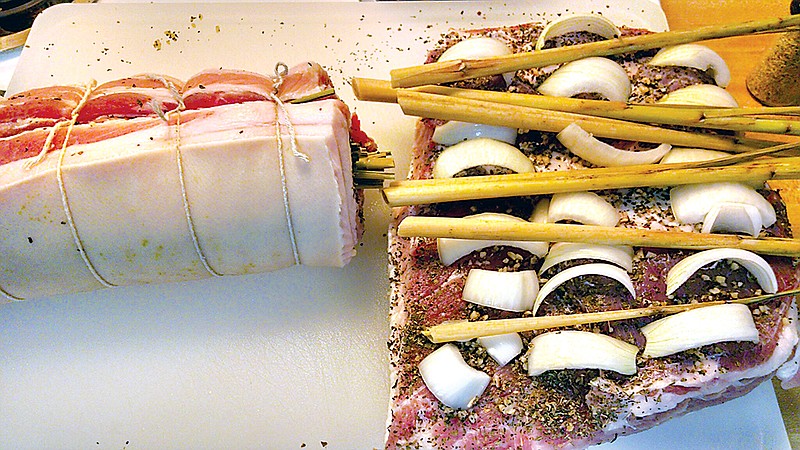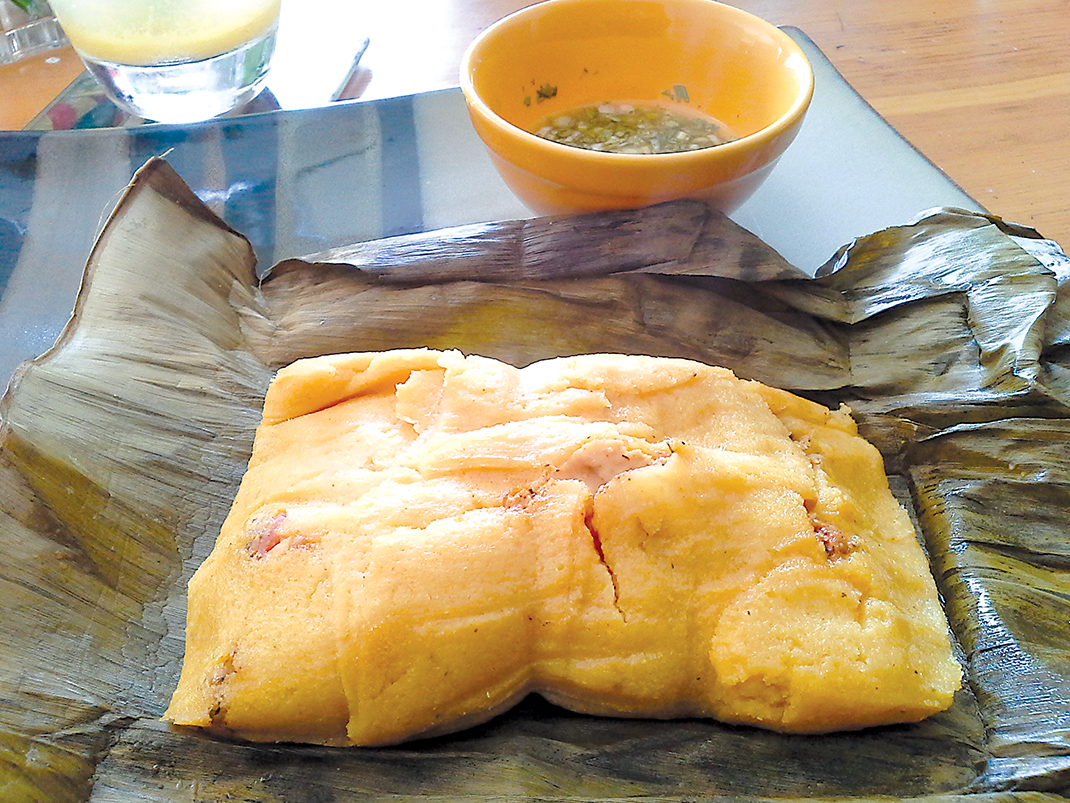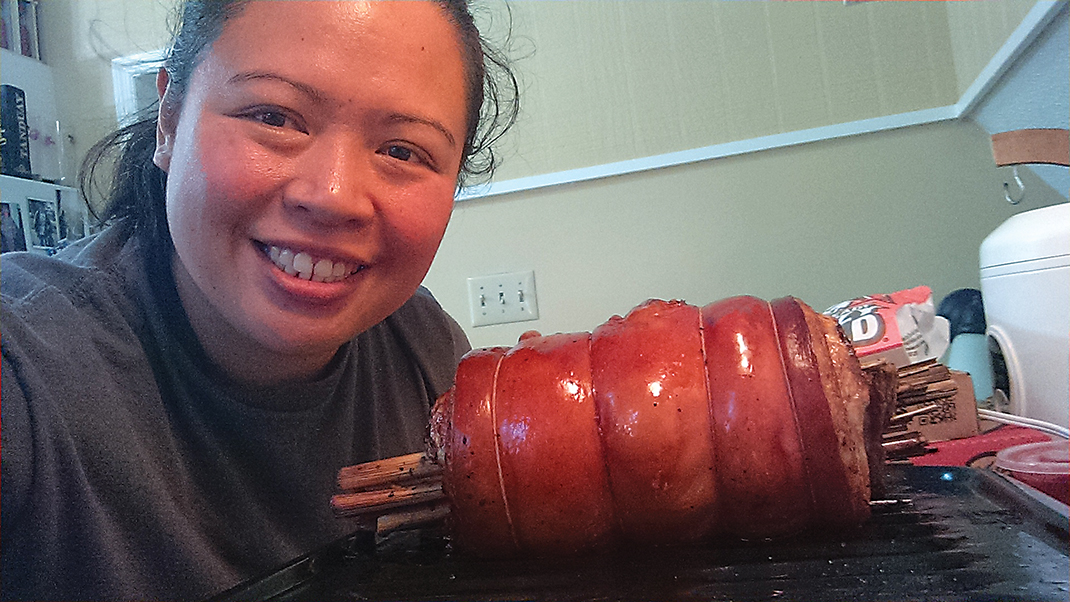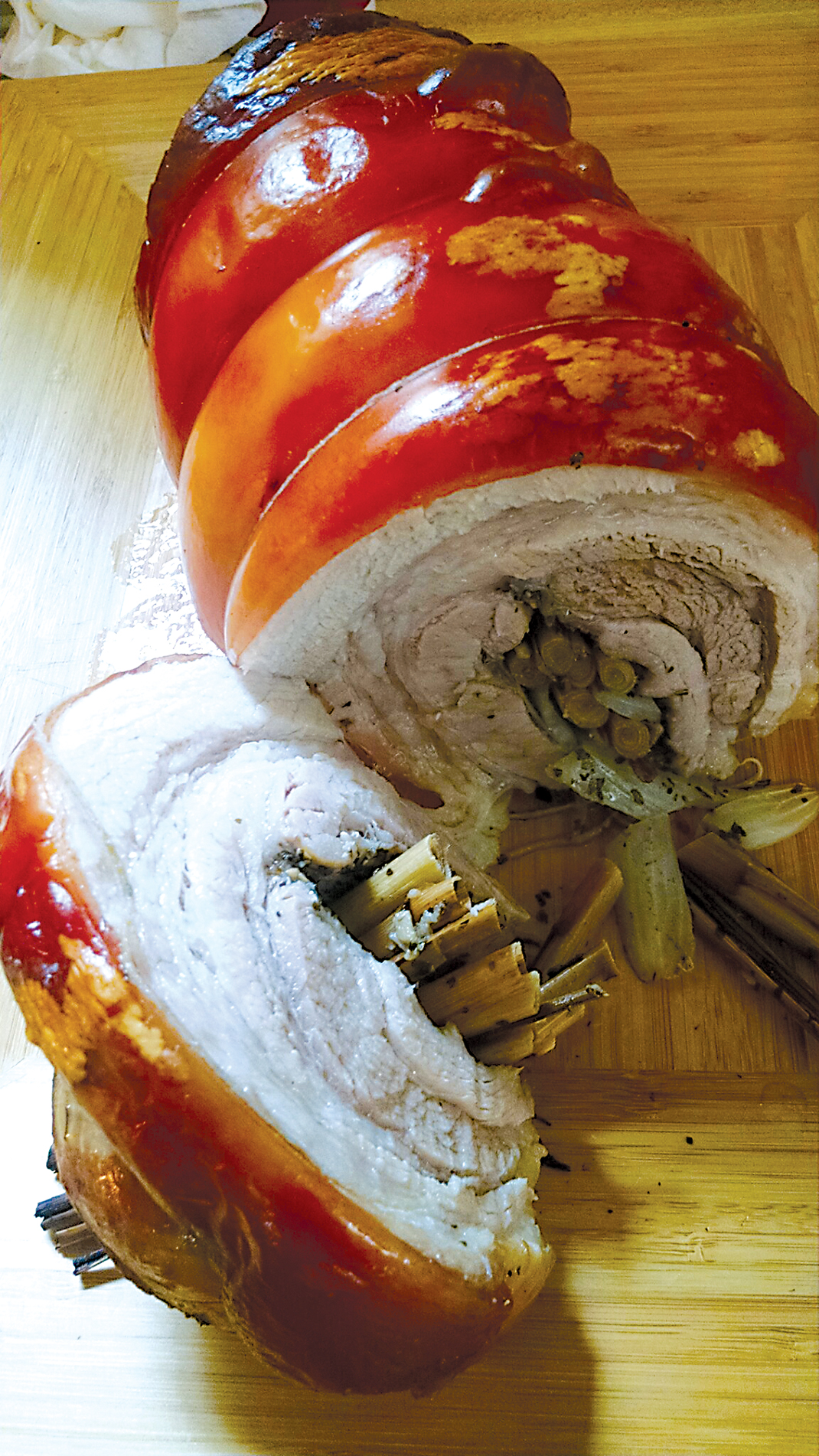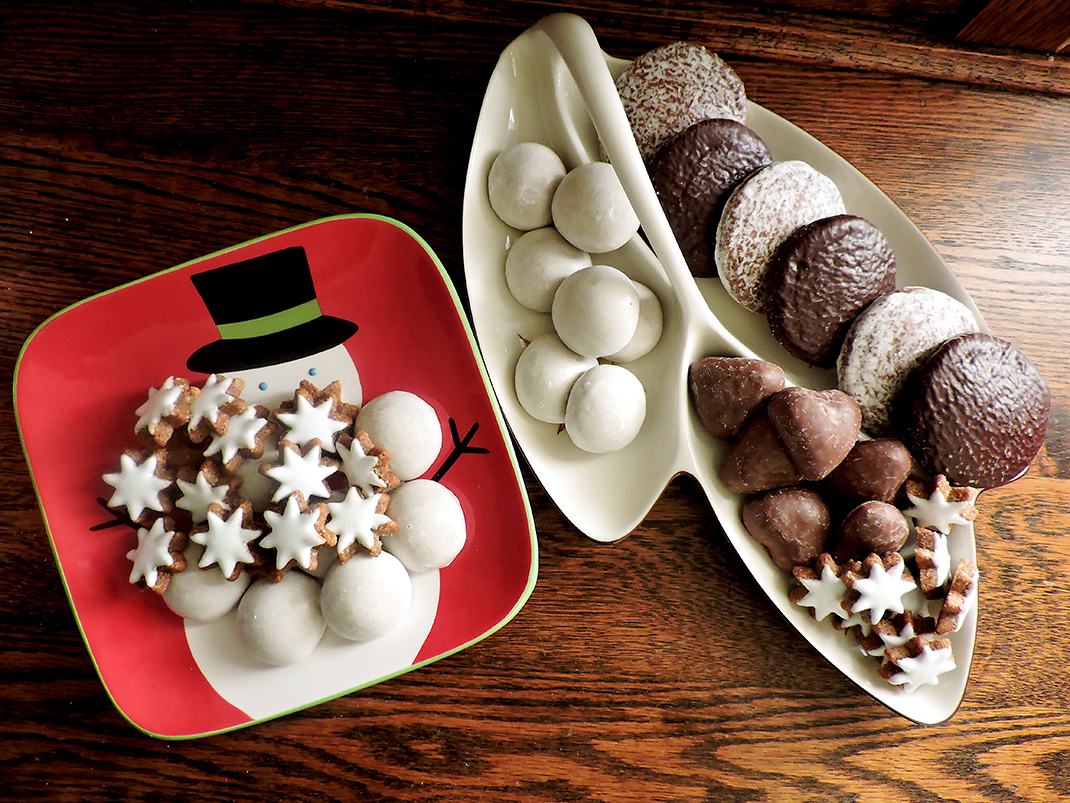The holiday season is anchored with traditions, many of which are fed from the dinner table. Whether it's the time and effort put into a traditional dish or the simple act of sitting down together as a family, food is part of the recipe that binds holiday celebrations. And it's not just that way in the United States.
Here, we share some stories and recipes that mark the season the globe over.
Growing up in the Andes Mountains, tamales meant one thing to Gladys Pineda-Loher: Time to celebrate.
"It's not something you eat every day because of the amount of work. It's something that really is traditional for Christmas or New Year's parties," says the Colombian native, who now serves as director of international community outreach for Chattanooga State.
It's something she's tried to keep alive for her four young children, including them in the weekend-long process. As they help chop the vegetables and clean the banana leaves, Loher will interrupt the festive Colombian Christmas tunes to share stories from a time when it was her abuela overseeing the ritualistic preparation.
"The final thing is the Colombian tamale, but the process is what I enjoyed the most," Loher says. "I enjoyed the time together."
Although there are just five people now, instead of the 20-25 manning individual stations to crank out 300 tamales, and they buy the pork instead of slaughtering a prized pig from her grandfather's farm, the process remains an important part of holiday celebrations.
"The memories come from those smells," Loher says. "They bring more than the food itself, but the memory of sharing and of family tradition.
"Family tradition makes part of what is called the Nochebuena (Christmas Eve)."
Pineda Family Recipe Colombian Tamales
Makes approximately 15 tamales
What you need:
For the marinade:
1 white onion
4 green onions, stalks only
6 garlic cloves
5 tablespoons all-purpose seasoning (Triguisar or Sazón Goya)
Salt and pepper to taste
2 cups water
For the guiso (sauce):
2 tablespoons olive oil
1 white onion or 3 shallots, finely chopped
red bell pepper, finely chopped
1 chicken bouillon cube
1 tablespoon all-purpose seasoning (Triguisar or Sazón Goya)
Salt and pepper to taste
5 tomatoes, deseeded and finely chopped
For the filling:
1 pound country-style pork ribs, cut into 15 pieces
1 pound pork meat of your choosing (pork steaks or pork loin), cut into 15 pieces
1 pound pork belly, cut into 15 pieces
5 medium carrots
15 sprigs Italian parsley
Water
Salt and all-purpose seasoning to taste (Triguisar or Sazón Goya)
For the masa (dough):
8 cups water
1 chicken bouillon cube
1 tablespoon all-purpose seasoning (Triguisar or Sazón Goya)
1 tablespoon onion powder
1 teaspoon garlic powder
Salt to taste
1 package pre-cooked white cornmeal
1 cup frozen or raw sweet peas
For the wrapping:
3, 16-ounce bags frozen banana leaves
Butcher string
What you do:
1. The night before, blend all the marinade ingredients in a blender or food processor.
2. Put the pork meat into one or two large bowls and add the marinade. Cover and refrigerate overnight.
3. Thaw banana leaves in the fridge overnight.
4. Carefully take the leaves out of the bag and cut them into rectangles approximately 20 inches long.
5. Clean both sides of each leaf with a damp cloth or paper towel. If the leaves are stiff, you can pass them over the flame of your gas stove, set to medium-low, for a few seconds to soften them. This also helps to avoid cracks.
6. Peel and cut the potatoes into thick slices and place them in a medium bowl with enough water to cover the potatoes. Season the water with salt and all-purpose seasoning to taste.
7. Peel and cut the carrots into slices and place them in a small container with enough water to cover the carrots. Season the water with salt to taste.
For the guiso:
1. In a large pan, heat the olive oil at medium-low heat and add the onion, garlic, red bell pepper, chicken bouillon, all-purpose seasoning, salt and pepper. Stir well and cook for about 5 minutes, or until the vegetables soften.
2. Add the tomatoes, reduce heat to low and cook for about 10 minutes, or until the sauce thickens. Add a bit of water if the sauce dries up.
For the masa:
1. Place the water for the masa in a large pot. Add the chicken bouillon, all-purpose seasoning, onion powder, garlic powder and salt. Heat without bringing to a boil, then slowly add the pre-cooked corn meal and stir with a spatula or wooden spoon until it looks like thick oatmeal. If the masa dries up, you can add more water.
2. Add the peas to the masa, stir well and remove from stove.
Assembling the tamales:
1. Place two banana leaves on a flat surface with the veins facing up. Make sure only the borders overlap.
2. Spread about cup of masa over the leaves with a spoon.
3. Add 1 tablespoon of guiso over the masa.
4. Place a sprig of parsley over the guiso.
5. Place 2 potato slices and 2 carrots slices in the masa.
6. Place 1 piece of pork rib, 1 piece of pork meat and 1 piece of pork belly over the masa.
7. Close the tamale by wrapping first one side of the leaf over the filling, then the other. Fold in the top and bottom sides as well. Secure with butcher string, tying it around the tamale like a present so that the string holds the tamale both vertically and horizontally.
Practice makes perfect: "I have not perfected yet the process of spreading the masa," says Loher. "You have to make it a special shape and place all the rest of the ingredients inside, and you have to fold it. When you fold the banana leaves, that's something I'm still trying to perfect. I'm not my mom yet."
8. Repeat this process with every single tamale.
Steaming the tamales:
1. Fill of a large pot (tamalera) with water and season with salt. Bring water to a boil and then place a steam rack inside the pot to avoid letting the tamales touch the water or the bottom of the pan.
Note: If you don't have a steam rack, you can place sticks or leftover banana leaves in the bottom of the pot instead, Loher says.
2. Place the tamales on the steam rack, one on top of the other, and steam on low heat for 1 hour and 45 minutes, to 2 hours. Check the water level every 30 minutes to prevent it from evaporating completely, making sure that if you add any, you keep the water level below the tamales.
3. Once the tamales are ready, take them out and let them rest for a few minutes.
4. Unwrap the tamales and serve them with dinner rolls and hot chocolate.
Annalyn Jones remembers attending her first party in the United States after emigrating from the Philippines.
"I thought, yes, yes. I'm not going to eat anything [beforehand]. Then we got there and there was Cheetos, little mini sandwiches and a vegetable tray."
Where was the roasted pig?
"Any big celebration - no certain season because in the Philippines there is only one season: tropical - if there's really something going on, there's a pig roast," she says.
Whether it's for a wedding, birthday or Christmas, the pig roast is a marker of her country in more ways than one.
"Not everybody has an oven in the Philippines. Probably 80 percent doesn't have appliances," says Jones. And, "Even though they're poor and don't have money, they have their own pig. Even in the inner cities you have farming."
The signature stuffing, lemongrass, grows wild in the mountains, and many grow their own patches for personal use.
In the States, where ovens are commonplace and pig roasts are not, she makes a modified version of her country's noted celebratory dish. It shares the table with American classics such as mashed potatoes, giving her son and husband a taste of her homeland, and vice versa.
"Those foods that you put in so much time and effort, and it'll be gone in not even five minutes, it's like the best food ever," Jones says.
The Real Deal
The Filipino-American Association of Greater Chattanooga, for which Jones serves as president, is hosting a pig roast Dec. 9 at St. Jude Catholic Church, 930 Ashland Terrace. she invites anyone who's interested to join. The party is scheduled to start at 5 p.m., "but that's Filipino time, so don't come at 5"; Jones says. Bring $5 and a potluck dish, or $10-$15 if not bringing a dish. To connect with the group and learn more, visit facebook.com/groups/FAAGC/events.
What you need:
2-kilogram slab of whole pork belly (remove any bones)
For the brine:
1 stalk of lemongrass, chopped
1 stalk leeks, chopped
2 pieces laurel (bay leaves)
1 tablespoon ground black peppercorn
5 cloves garlic, crushed
cup sugar
cup rock salt
5 cups of water
For the stuffing:
1 stalk lemongrass
1 stalk leeks
1 onion, chopped
2 cloves garlic, crushed
For the milk wash:
3 tablespoons evaporated milk
1 tablespoon water
What you do:
1. Preheat oven to 375 Fahrenheit. Wash and clean pork belly in running water. Drain.
2. In a medium-size pot, prepare the brine by combining all ingredients. Bring to a boil and simmer for about 5 minutes to release the aroma and flavor of the herbs and spices. Turn off heat and let it cool.
3. Submerge pork belly in the brine and place in refrigerator. Let soak overnight for best result.
4. Wash pork belly in running water and pat dry. Place on a flat surface and place all stuffing ingredients in the center.
5. Roll pork belly like a jelly roll and secure with twine. Place atop a rack in a roasting pan and brush pork belly with milk wash. Cover with aluminum foil.
6. Roast for 2 hours, then remove foil, brush again with milk wash and continue roasting for another hour, until the skin is crispy. Serve hot.
This time of year, a simple trip to Aldi reminds German transplant Sabine Busch of her favorite holiday dish of sorts: sweets. Whether it be the Ferrero Rochers that might be stuffed into her shoes on Saint Nicholas Day (Dec. 6), or the traditional Christmas cookies that often followed her family's three-course holiday meals, she has "more memories when it comes to sweets when it comes to Christmas food." While those three-course meals consisted of whatever each of the four family members wanted, sweets were the unanimous capstone.
"When I see those, I get Christmas feelings," Busch says of the special cookies now stocked on shelves at the German grocer.
But just because the typical goose, red cabbage and dumplings - or even the antithesis of a simple meal of sausages and potato salad - wasn't at the center of her family's holiday traditions doesn't mean they didn't have any. Germany is credited for today's Christmas tree tradition, and her family upheld the German custom of decorating theirs close to Dec. 24, the night when gifts were exchanged.
"A bell would ring and the Christmas tree would be lit for the first time," she says. "Then we would sing songs and open presents."
Her favorite part of the season (besides the sweets) remains Advent, when, on each of the four Sundays leading up to Christmas, her family would light a candle on their Advent wreath. It was an act of togetherness, and a reminder of what, to Busch, is the real reason for the season.
